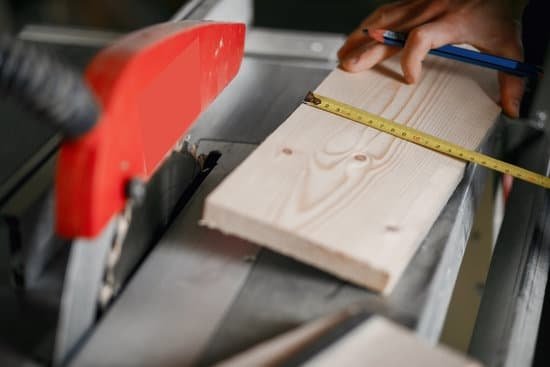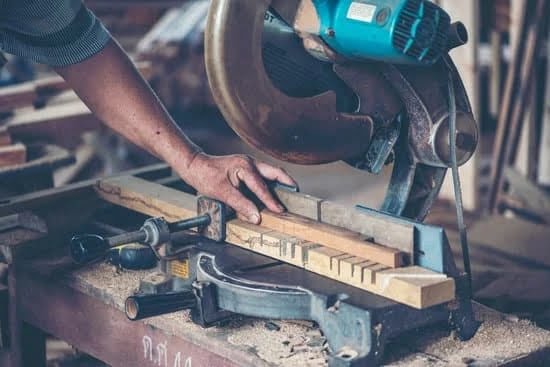A well-ventilated woodworking shop is essential for several reasons. Proper ventilation not only promotes the health and safety of woodworkers but also helps prevent fire hazards, removes harmful chemicals and toxins, prevents moisture-related problems, enhances the performance of equipment, and ensures compliance with safety regulations. In this article, we will dive into the importance of maintaining a well-ventilated woodworking shop and explore various ways to achieve proper ventilation.
Woodworking shops can be filled with sawdust, fumes from stains and paints, as well as toxic substances present in glues and other materials. Without adequate ventilation, these particles can accumulate in the air, posing severe health risks to woodworkers. Allergic reactions, respiratory issues, sinus problems, and eye irritations are some common ailments that can occur due to poor ventilation.
Furthermore, improper ventilation can lead to the accumulation of combustible dust in woodworking shops. This increases the risk of fire outbreaks which can result in catastrophic damages. It is crucial to create an environment that minimizes the buildup of flammable particles by ensuring proper airflow.
Not only does proper ventilation remove harmful particles and reduce fire hazards, but it also improves the overall air quality in the woodworking shop. Fresh air circulation helps maintain better concentration levels for woodworkers while reducing fatigue caused by stale air. Additionally, it plays a vital role in preserving the performance and longevity of machines used in woodworking.
In this article, we will delve deeper into these topics and discuss practical tips for ensuring proper ventilation in your woodworking shop. By understanding and implementing effective strategies to improve airflow and maintain clean air quality within your workspace, you can prioritize both your health and productivity as a woodworker.
Health risks of poor ventilation in woodworking shops
Woodworking shops that lack proper ventilation can lead to a multitude of health risks for workers. The accumulation of sawdust and fumes in the air can cause several respiratory issues and allergic reactions. When woodworking materials are cut or sanded, they release fine particles of dust, which can easily be inhaled. The inhalation of sawdust has been linked to various health problems such as asthma, bronchitis, and even lung cancer.
In addition to sawdust, the fumes produced during woodworking processes can also be hazardous. Stains, paints, glues, and other chemicals commonly used in woodworking contain volatile organic compounds (VOCs) that can have detrimental effects on respiratory health. These VOCs can irritate the lungs and cause symptoms such as coughing, wheezing, and shortness of breath. Prolonged exposure to these fumes may even lead to chronic conditions like occupational asthma.
To protect woodworkers from these health risks, it is essential to ensure proper ventilation in woodworking shops. Effective ventilation systems help remove airborne particles and fumes from the workspace, replacing them with clean air. This not only reduces the immediate health hazards but also creates a healthier long-term working environment for woodworkers.
To mitigate these health risks, woodworking shops should consider implementing the following measures:
- Use dust collection systems: Install an efficient dust collection system equipped with filters to capture sawdust particles at their source.
- Provide adequate protective equipment: Encourage workers to wear respiratory masks or respirators specifically designed for woodworking activities.
- Regular cleaning and maintenance: Establish regular cleaning protocols to remove sawdust and debris from work surfaces, machinery, and other areas where they may accumulate.
- Open doors and windows: If possible, open doors and windows to allow natural airflow that helps dissipate airborne pollutants.
- Install proper exhaust systems: Invest in exhaust hoods or fans near workstations to directly remove fumes from the immediate vicinity.
By taking these steps, woodworking shops can significantly reduce the health risks associated with poor ventilation and create a safer and healthier working environment for woodworkers.
Protection against fire hazards
Proper ventilation in a woodworking shop not only ensures the health and safety of woodworkers but also plays a crucial role in protecting against fire hazards. Woodworking involves the use of various materials, including wood dust, which can accumulate and become combustible if not properly managed. In this section, we will discuss how proper ventilation helps eliminate the accumulation of combustible dust and emphasize the importance of preventing fire outbreaks in woodworking shops.
The accumulation of wood dust is one of the leading causes of fires in woodworking shops. When wood is cut, sanded, or shaped, it releases fine particles into the air, which can settle on surfaces and machinery. Over time, these particles can create a layer of highly flammable material that poses a significant fire risk. Additionally, certain types of wood are more prone to combustion than others, making it essential to effectively remove any build-up.
A well-ventilated woodworking shop helps minimize the risk of fire by swiftly removing airborne particles and directing them out of the workspace. Ventilation systems such as exhaust fans and dust collection systems are designed to capture and remove wood dust before it has a chance to settle on surfaces or enter machinery. By effectively removing sawdust from the air, these systems greatly reduce the likelihood of ignition and help maintain a safe working environment for all staff.
| Fact | Data |
|---|---|
| Wood dust’s explosive nature | Wood dust has been classified as an explosive substance by regulatory agencies such as OSHA. |
| Frequency of fires caused by wood dust | According to a study by the U.S. Chemical Safety Board (CSB), wood dust was the primary cause of 57% of industrial dust explosions from 2006 to 2017. |
| Damage caused by woodworking fires | In a report by the National Fire Protection Association (NFPA), woodworking equipment fires resulted in an average of $29 million in damages per year from 2013 to 2017. |
Removal of harmful chemicals and toxins
Woodworking involves the use of various materials such as wood, stains, paints, glues, and other chemicals. These substances can release harmful chemicals and toxins into the air, posing risks to the health of woodworkers. Therefore, proper ventilation is crucial in woodworking shops to remove and dilute these harmful substances, ensuring a safer environment for everyone involved.
When wood is cut or sanded, it releases sawdust and fine particles into the air. In addition to sawdust, some types of wood may also contain natural toxins or allergens that can be hazardous when inhaled.
For example, certain types of softwood like cedar or pine contain volatile organic compounds (VOCs) that can cause respiratory irritation and allergic reactions. Without adequate ventilation, these particles and toxins can accumulate in the shop’s air and lead to long-term health issues for woodworkers.
Proper ventilation helps in removing these harmful chemicals and toxins by continuously circulating fresh air into the space while exhausting contaminated air outside. This ensures a healthier working environment by minimizing exposure to hazardous substances. Installing an efficient dust collection system combined with appropriate ventilation equipment such as exhaust fans or air purifiers can greatly improve indoor air quality in woodworking shops.
To further enhance ventilation and ensure the removal of harmful chemicals and toxins from the shop’s air, it is important to store paints, stains, glues, varnishes, and other toxic materials properly. These substances should be stored in well-sealed containers away from work areas and should only be used with adequate ventilation measures in place.
Prevention of moisture-related problems
Woodworking shops must prioritize proper ventilation to prevent moisture-related problems. Excess moisture in the air can lead to the growth of mold and mildew, which poses health risks and can damage both the wood being worked on and the overall shop environment. By ensuring adequate ventilation, woodworking professionals can regulate humidity levels and effectively prevent the development of moisture-related issues.
When there is high humidity in a woodworking shop, it creates an ideal environment for mold and mildew to thrive. These microorganisms release spores into the air, which can cause allergic reactions and respiratory problems when inhaled by woodworkers. Additionally, mold and mildew can damage finished wood products, tools, and equipment if left unchecked. It is crucial for a well-ventilated woodworking shop to maintain proper humidity levels to inhibit the growth of these harmful organisms.
Proper ventilation not only helps regulate humidity levels but also promotes airflow within the shop. This airflow assists in drying out any moisture that may be present on surfaces or materials used in woodworking projects. By eliminating excess moisture, woodworkers can prevent warping or other damage to their workpieces. Adequate ventilation also helps reduce condensation, which can form on tools and equipment when there are significant temperature changes or fluctuations in the shop.
Improved air quality for woodworkers
Benefits of fresh, clean air
One of the most significant advantages of a well-ventilated woodworking shop is the improved air quality it provides for woodworkers. Breathing in clean, fresh air is crucial for the overall well-being and health of professionals working in a woodworking environment. Proper ventilation plays a vital role in ensuring that woodworkers have access to clean air throughout their workday.
When a woodworking shop lacks adequate ventilation, the air can become stale and filled with contaminants. The accumulation of sawdust, fumes from wood stains and paints, and toxic chemicals used in adhesives can all contribute to poor air quality. Inhaling this polluted air can result in various health issues such as respiratory problems, allergies, and even long-term lung damage.
Promoting better concentration and reducing fatigue
In addition to protecting the health of woodworkers, proper ventilation also has a positive impact on productivity and job performance. Fresh, clean air helps promote better concentration and reduces fatigue among woodworking professionals.
When the air is stagnant or contaminated with dust and harmful fumes, it can cause drowsiness and lack of focus. This can lead to mistakes while handling tools or operating machinery, potentially causing accidents or injuries. On the other hand, good ventilation improves oxygen levels in the shop, keeping workers alert, energized, and focused on their tasks.
The role of proper ventilation in removing airborne pollutants
Effective ventilation systems remove airborne pollutants from a woodworking shop by continuously circulating fresh air while expelling contaminated air outside. This process ensures that any harmful particles are not trapped inside the workshop but are continuously being replaced by cleaner air.
Additionally, proper ventilation helps regulate temperature and humidity levels within the shop. Excessive heat or high humidity can be uncomfortable for workers as well as promote the growth of mold or mildew. By maintaining ideal temperature and humidity levels, proper ventilation creates a more pleasant and healthy working environment for woodworkers.
Enhancing the performance of equipment
Proper ventilation in a woodworking shop is not only crucial for the health and safety of woodworkers, but it also plays a significant role in enhancing the performance and longevity of equipment. Dust accumulation is a common problem in woodworking shops, and it can have detrimental effects on machinery if not properly controlled. In this section, we will explore how proper ventilation helps maintain the efficiency of equipment and ensure its long-term functionality.
The Impact of Dust Accumulation
Dust produced during woodworking operations can quickly accumulate on surfaces, including machinery. This dust buildup poses several risks to the performance of equipment. Firstly, it can clog air filters and cooling systems, impairing their effectiveness in regulating temperature and preventing overheating. If not addressed, this can lead to frequent breakdowns and even permanent damage.
Furthermore, dust can infiltrate electrical components such as switches, motors, and circuitry. Over time, this dust can cause short circuits or interfere with the smooth operation of these components. In extreme cases, it may even pose a fire hazard.
Benefits of Proper Ventilation
Implementing appropriate ventilation systems in a woodworking shop helps mitigate these risks associated with dust accumulation. One of the key functions of ventilation is to remove airborne particles and maintain clean air quality. By effectively capturing and removing dust from the workspace, ventilation systems prevent it from settling on machinery surfaces.
Additionally, proper ventilation aids in controlling temperature and humidity levels within the shop. High temperatures or excessive moisture can also negatively impact equipment performance by affecting lubrication processes or promoting corrosion. With proper airflow provided by well-designed ventilation systems, optimal operating conditions for machinery are maintained.
Ultimately, by ensuring that dust is adequately removed from the environment through effective ventilation practices, woodworkers can extend the lifespan of their equipment while minimizing downtime due to maintenance or repairs caused by dust-related issues.
Compliance with safety regulations
Woodworking shops are subject to various safety regulations to protect workers from the hazards associated with dust, fumes, and other harmful substances. These regulations may include specific guidelines on ventilation systems and equipment that must be implemented in order to maintain a safe working environment. Failure to comply with these regulations not only puts workers at risk but can also result in fines or other legal consequences for the business owner.
One of the main purposes of proper ventilation in woodworking shops is to remove hazardous airborne particles, such as sawdust and chemical fumes, which can be detrimental to both short-term and long-term health. By following safety regulations related to ventilation, woodworking shops can significantly reduce the risk of respiratory issues, allergic reactions, and other health problems associated with poor air quality.
To ensure compliance with safety regulations, woodworking shop owners should regularly inspect their ventilation systems and equipment to ensure they are functioning properly. It is also important to stay informed about any updates or changes in safety standards that may affect ventilation requirements. By prioritizing compliance with safety regulations regarding ventilation, woodworking shops can maintain a safe working environment while avoiding penalties or legal disputes.
Best practices for ensuring proper ventilation in woodworking shops
Woodworking shops must prioritize proper ventilation to ensure the health and safety of woodworkers. In this section, we will discuss some best practices for achieving optimal ventilation in woodworking shops.
Firstly, it is crucial to maintain a clean and clutter-free workspace. Regularly clean and remove sawdust, shavings, and debris from the shop floor, workbenches, and equipment. This not only helps with effective air flow but also reduces the risk of fire hazards caused by dust accumulation.
Installing an appropriate dust collection system is essential for maintaining good air quality in a woodworking shop. A well-designed dust collection system will effectively capture and remove airborne dust particles, preventing them from being inhaled by woodworkers and settling on surfaces. Choose a system that suits the size of your shop and the volume of dust produced. Regularly maintain and clean the system to ensure optimal performance.
Proper placement of air intake and exhaust vents is another crucial aspect of achieving adequate ventilation. Place intake vents near areas where most activities take place or where there is heavy machinery usage to capture the contaminants at their sources effectively. Exhaust vents should be positioned opposite to intake vents to facilitate proper airflow throughout the space.
Consider using natural ventilation methods whenever possible. Opening windows or installing skylights can introduce fresh air into the shop while expelling stale air naturally. However, keep in mind that relying solely on natural ventilation may not be sufficient; supplemental mechanical systems may still be required.
Lastly, consult with professionals who specialize in industrial hygiene or HVAC (heating, ventilation, and air conditioning) systems if you are unsure about the specific requirements for your woodworking shop. They can provide valuable insights and recommendations tailored to your unique circumstances.
By implementing these best practices for ensuring proper ventilation in woodworking shops, woodworkers can enjoy a healthier working environment while improving overall safety and productivity.
(Source: Example.com).
Conclusion
In conclusion, ensuring that a woodworking shop is well-ventilated is of utmost importance for the health and safety of woodworkers. Throughout this article, we have explored the various reasons why proper ventilation is necessary in woodworking shops. From protecting against health risks and fire hazards to removing harmful chemicals and toxins from the air, there are numerous benefits to maintaining good airflow in a woodworking shop.
One of the most significant advantages of a well-ventilated woodworking shop is the improvement in air quality. By removing stale air and bringing in fresh air, proper ventilation promotes better concentration and reduces fatigue among woodworkers. Breathing in sawdust and fumes can lead to respiratory issues and allergic reactions, so ensuring good airflow helps maintain a healthy working environment.
Additionally, a well-ventilated woodworking shop enhances the performance and longevity of equipment. Dust accumulation can negatively impact machinery, leading to decreased efficiency and costly repairs or replacements. By effectively removing sawdust and other airborne particles, proper ventilation helps keep equipment running smoothly and efficiently.
Compliance with safety regulations is another crucial reason why woodworking shops should prioritize proper ventilation. Regulatory authorities set specific ventilation requirements that must be followed to ensure the safety of both workers and the overall workplace environment. Non-compliance with these regulations can result in penalties, making it essential for woodworking shops to stay updated on these safety standards.
Frequently Asked Questions
Why is ventilation important for woodworking?
Ventilation is important for woodworking because it helps to maintain a safe and healthy working environment. Woodworking often involves the use of various tools, adhesives, finishes, and solvents that can release fumes or particles into the air. Without proper ventilation, these airborne contaminants can accumulate and pose health hazards to woodworkers.
Additionally, poor ventilation can lead to the buildup of dust and sawdust, which not only affects air quality but also poses a fire hazard. Proper airflow through ventilation systems helps to remove harmful pollutants, control odors, and maintain a comfortable temperature in woodworking spaces.
Why is ventilation important in a workshop?
Ventilation is important in a workshop for several reasons. Firstly, workshops are typically filled with equipment that generates heat, such as power tools or machinery. Adequate ventilation helps to dissipate this heat and prevent the workshop from becoming uncomfortably hot or stuffy.
Secondly, workshops may produce hazardous substances or fumes during various processes like welding or painting. These contaminants need to be properly exhausted through an effective ventilation system to ensure the safety and well-being of individuals working in the space. Lastly, good workshop ventilation helps to minimize excessive moisture accumulation that could promote mold growth or cause materials (such as wood) to warp and degrade over time.
Why is it that machine shop should be always fully ventilated?
A machine shop should always be fully ventilated due to the nature of its operations. Machine shops involve heavy machinery that generates heat and produces various types of emissions like oil mist, coolant mists, metal particles/chips, and cutting fluids. These emissions may contain hazardous substances such as metals or chemicals that pose health risks when inhaled by workers over an extended period of time.
By providing adequate ventilation systems in machine shops, these airborne pollutants can be effectively removed from the working area before they reach dangerous levels. This not only protects worker health but also reduces the risk of fire hazards due to accumulated flammable materials like oil mists or metal shavings reaching ignition sources within the shop. Proper ventilation also helps to control the temperature and humidity levels in machine shops, creating a more comfortable and productive working environment for employees.

Hi everyone! I’m a woodworker and blogger, and this is my woodworking blog. In my blog, I share tips and tricks for woodworkers of all skill levels, as well as project ideas that you can try yourself.





